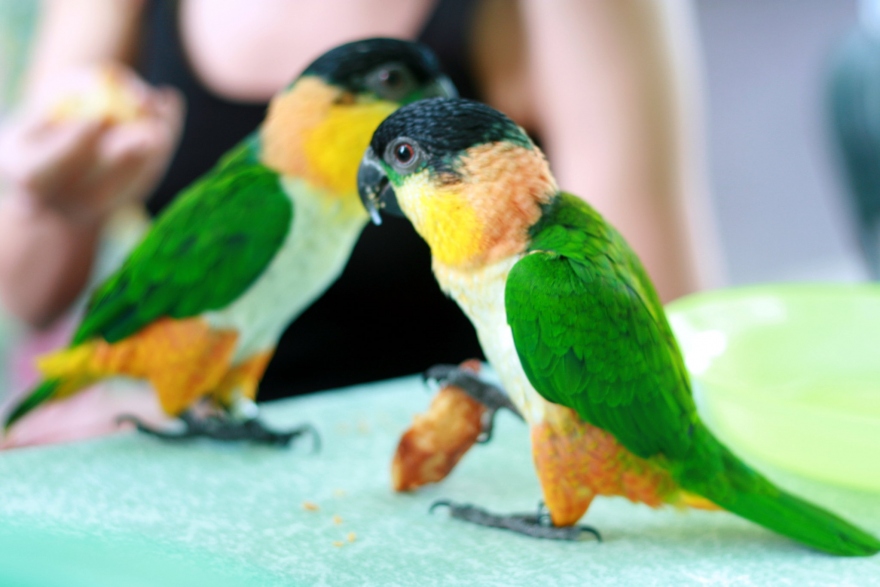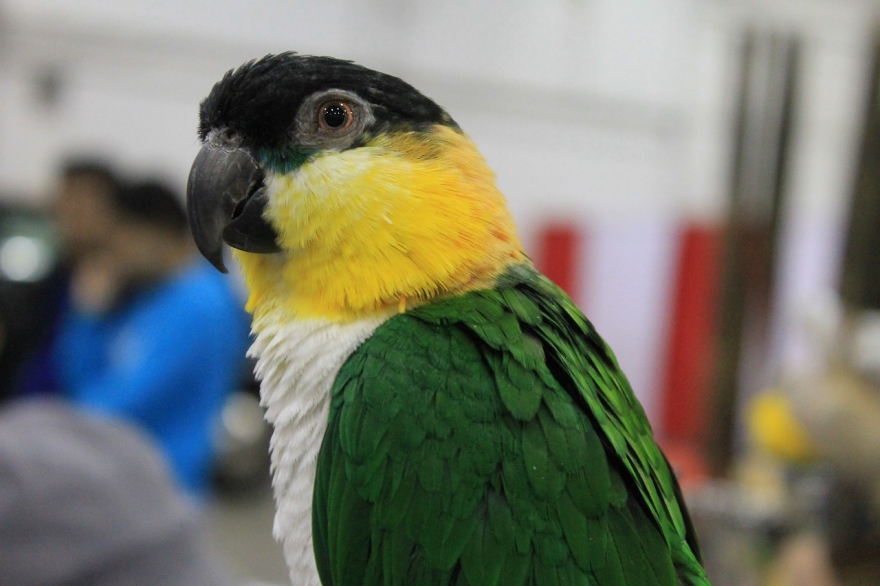The Black-headed Caique is a medium-sized parrot found in the northern parts of the Amazon rainforest in South America. They are attractive, intelligent, and long-lived—factors that have made them very popular in the pet trade. They are still quite rare in Australian aviculture, but availability has increased and prices have dropped considerably in recent years. It’s now possible to acquire a breeding pair for under $3,000.

Housing & Compatibility
Although they live in small flocks in the wild, when in captivity black-headed caiques should be housed in single-pair aviaries. They can be quite territorial and may fight with other birds, so double wiring between aviaries is essential.
The black-headed caique has a reputation for being very loud. It may be inappropriate to keep these birds in an outdoor aviary if you live in a dense residential area.
An adequate amount of flying space is necessary to ensure good fitness and minimal stress. A large suspended or traditional-style aviary of approximately 3 meters (10 feet) in length should be used. Natural perches made from non-toxic branches should be provided. They will need to be replaced periodically as black-headed caique enjoy chewing.
Diet & Feeding
A quality medium parrot seed mix forms the basis of the black-headed caique’s diet. Seed should be stored in an airtight plastic container to prevent exposure to vermin and moisture. Seed can be soaked or sprouted to improve its nutritional value.
A good diet includes a mix of fruits, nuts, and vegetables, and Leafy greens. Favourites include silverbeet, corn, apples, and pears. Some have been known to consume live food such as mealworms.
Many breeders prefer to feed pellets instead of seed. Pellets provide a more balanced intake of vitamins and minerals and produce less waste. Commercial supplements such as egg & biscuit mix can be added to the diet to provide additional protein during the breeding season.
Do not feed anything from the list of forbidden foods.

Breeding
Black-headed caiques commence breeding in late spring as the weather begins to warm up. Pairs should be 2-3 years old before they are permitted to commence breeding. Their first breeding attempts are often quite poor, so young pairs should be monitored closely. Chicks may need to be confiscated from poorly performing parents and hand-raised.
They breed in hollow logs or nest boxes containing a sawdust or pine shaving substrate. A medium-sized nest box that’s about a foot deep is ideal, but consider that different birds have different preferences for the size and shape of their box.
Black-headed caiques like to roost in a nesting box year-round, so their preferred box should not be removed from the aviary when breeding has concluded. It is important to clean the box and replace the substrate and the beginning and the end of the breeding season.
Most parrots prefer a nest box opening just large enough to squeeze through, so a separate hatch for cleaning and inspection should be added to the nest box. Different nesting receptacles should be offered to determine which the pair prefers to use. Disused boxed should be removed when laying has commenced.
Black-headed caiques generally lay between 2 and 4 eggs. Young or inexperienced birds may lay as few as two. The hen will incubate the eggs for roughly three and half weeks. After hatching, the young birds will remain in the nest for ten weeks before fledgling. They will be fully independent from their parents approximately 4-6 weeks after fledging.
Young birds can usually stay with their parents indefinitely, however aggression can occasionally become an issue if the parents attempt to raise a second clutch of chicks, or if the aviary is too small for the increased number of birds. The group should be observed frequently and separated if fighting occurs.
Sexing
Black-headed caiques are sexually monomorphic and require a DNA test to accurately sex.
Mutations
A blue mutation of this parrot exists, but it can not yet be considered “established” and would be extremely difficult to acquire.
Health & Lifespan
A strict worm control regime and regular preventative treatment for bacterial and fungal infections is critical to ensure the long-term health of any bird.
With proper care, a black-headed caique may live for up to 40 years.
Hi there I have a pair of B.H.. caiques about 3 years old. They have not bred before. Is it esential that they roost in the box at night in order to breed? They are sleeping on a perch or wire. Thanks Neil